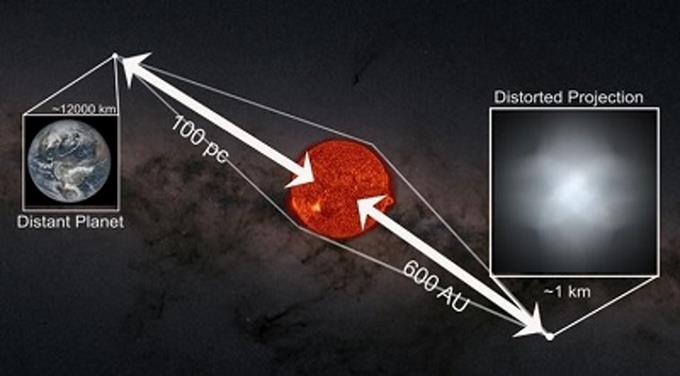Stanford astronomers are working on a new conceptual imaging technique that is 1,000 times more accurate than the most powerful imaging technology currently in use.
By applying the warping effect of gravity in space called lensing, Scientists can handle this phenomenon to create images that are much more advanced than current images. The goal is to transcend the physical boundaries of telescopes.
In a study published in The Astrophysical Journal, researchers describe a way of manipulating solar gravitational lenses to see planets outside our solar system. By placing the telescope, the sun, and the exoplanet on a line in the center of the sun, scientists can use the sun’s gravitational pull to increase the brightness as the exoplanet passes. Unlike a magnifying glass with a curved surface that deflects light, the gravitational lens has a curved space-time that allows it to capture images of distant objects.
Planets within a hundred light years from the moon to Earth
Bruce McIntosh, professor of physics and associate director of physics at the Stanford School of Humanities and Science, said: “We like to take pictures of planets orbiting other stars in our own solar system. We hope to take a picture of a planet 100 light years away that will have such an impact, “he said in a statement.
The problem at present is that his proposed technique would require more advanced space travel than is currently available. However, the researchers said it could reveal the promise of the concept and other planets, and that it would be worth considering and developing.
Gravitational lensing was not observed experimentally during a solar eclipse until 1919. As the Moon blocks sunlight, scientists have been able to observe stars moving closer to the Sun from their known positions. This is clear evidence that gravity can bend light and the first observational evidence that Einstein’s theory of relativity is correct.
Then, in 1979, Professor von Eshleman of Stanford published a detailed account of how astronomers and spacecraft could use the Sun’s gravitational lens. (Meanwhile, astronomers, including many at Stanford’s KIPAC, now routinely use the powerful gravitational pull of very large galaxies to study the early evolution of the universe.)
But until 2020 the imaging technique to monitor the planets was explored in detail. Slava Durishev of the Jet Propulsion Laboratory at the California Institute of Technology described a technique in which rockets can be used to scan light beams from a planet to reconstruct a clear image of a space-based telescope, but this technique requires a lot of fuel and weather.
Alexander Madurovich, Ph.D. The KIPAC student invented a new method of reconstructing the surface of a planet from an image taken directly from the sun. By capturing the halo of light around the sun created by Exoplanet, Madurovich’s algorithm can remove light distortion from the hoop by modifying the curve of gravity lensing, which in turn turns the hoop back into a sphere.
Madurovich demonstrated his work using images of a rotating earth taken by a DSCOVR satellite sitting between the Earth and the Sun. He used a computer model to see what the earth would look like when looking at the warping effects of the sun’s gravity. Using his methods for observations, Madurovich was able to retrieve images of the Earth and prove that his calculations were correct.
To capture the image of an exoplanet through solar gravitational lensing, a telescope must be placed at least 14 times farther from the Sun, beyond the edge of our solar system, than humans can see. A spaceship. But distance is only a small fraction of the light years between the Sun and an extrasolar planet.
“By spreading the light curved by the sun, you can create an image beyond a normal telescope,” Madurovich said. “So scientific ability is an unused mystery because it opens up this new tracking ability that is not yet available.”
Currently, we need a telescope 20 times wider than Earth to capture an exoplanet at the clarity described by scientists. By using the sun’s gravitational force as a telescope, scientists can use it as a large natural lens. A Hubble-sized telescope combined with solar gravitational lensing is capable of capturing exoplanets capable of capturing the finest details.





:quality(85)/cloudfront-us-east-1.images.arcpublishing.com/infobae/KTKFKR763RBZ5BDQZJ36S5QUHM.jpg)